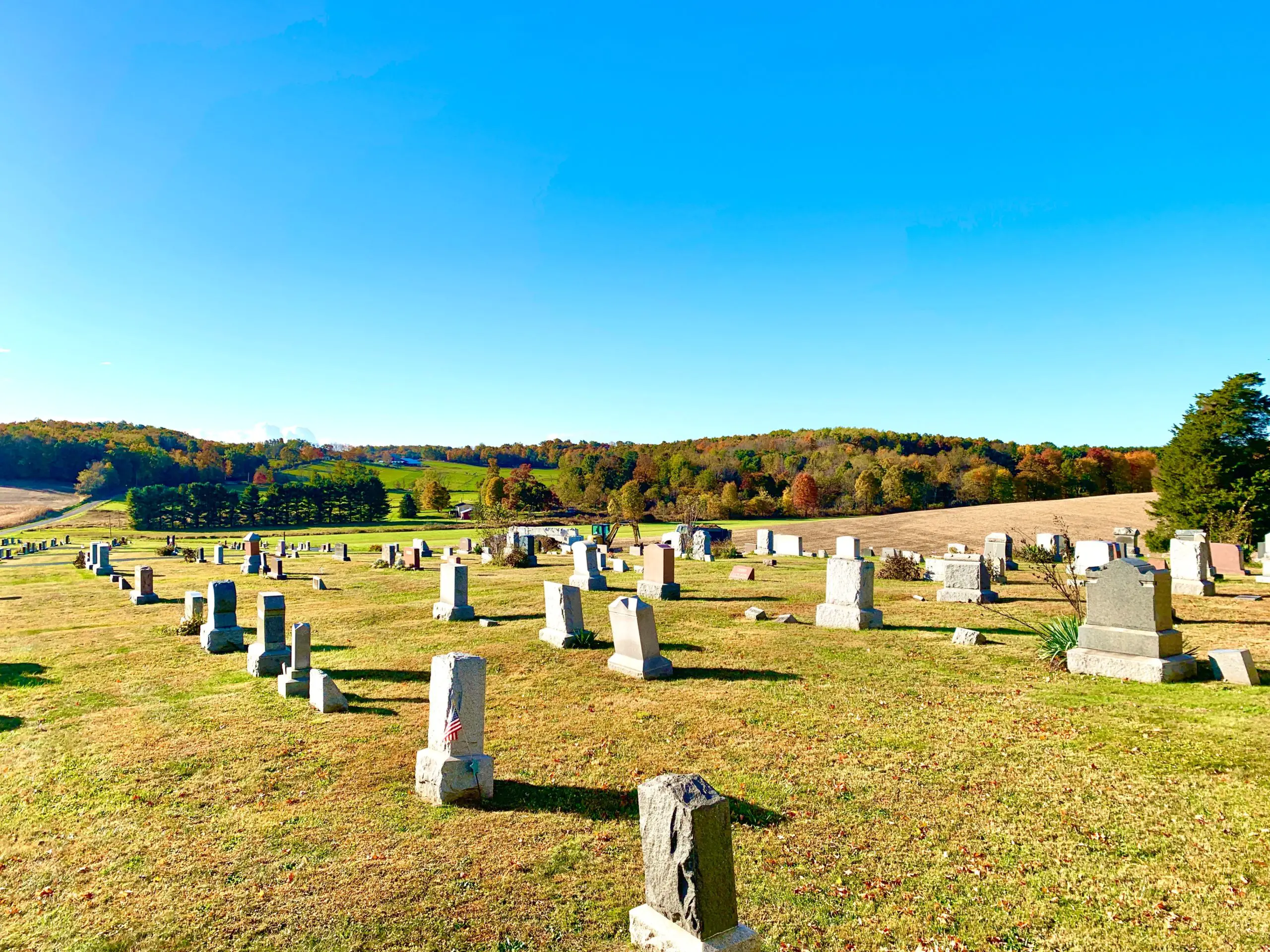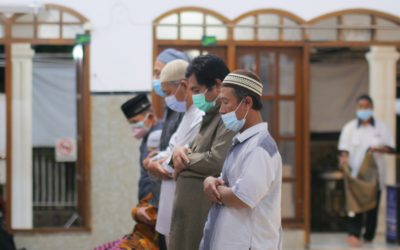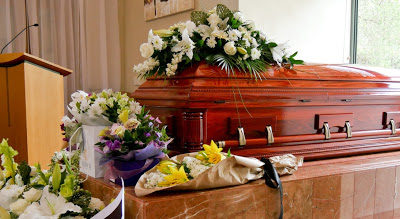After the janazah (funeral) prayer has been completed, the body can now be buried at the cemetery. However, it is important to keep in mind that in order for the burial to take place, a temporary death certificate and burial permit must have been issued; generally, your funeral home director will ensure that all the paperwork is in order (learn more about death certificates).
Who can attend the burial process?
This can vary based on a family’s wishes; however, generally speaking both Muslim and non-Muslims, men and women, can be allowed to attend the funeral procession. In some cases, certain families/communities may not encourage women to be present during the actual burial (See: can women attend a Muslim burial?). It is important for those that do attend the burial to follow certain etiquettes of decorum and dress code.
What is the dress code and etiquettes for a Muslim funeral?
Both men and women should dress modestly when attending the funeral of a Muslim. This could look like pants and a shirt for a man and the same for a woman or a long dress or long skirt for a woman as well. Head covering for a non-Muslim woman is not mandatory, but some woman may decide to also choose a head covering when entering the mosque/attending a Muslim funeral as a sign of respect.
Other general etiquettes and decorum include:
- Those carrying and following the funeral procession should avoid raising their voice
- Stand until the procession goes ahead of you or until it is put down5
- It is ok to cry; however, avoid screaming or wailing
- There are no special items that are carried nor is it recommended to engage in collective chants or similar behavior
How should the body of the deceased be carried to the grave?
Once at the cemetery, the deceased is carried on a bier (stand used to carry the body/coffin) to the grave; the body is carried by men, often close family members of the deceased. It is important that those that carry the body do it briskly, but with great care1.
As to those that are walking along the procession, there are a range of opinions in terms of where to walk (e.g., behind, in front, along the side) in relation to those carrying the deceased.
Are there any restrictions on the time of day for the burial?
There are no restrictions or special times on the time of day for the burial; however, one may want to consider times that are logistically feasible for having funeral/cemetery workers available to facilitate a burial as well as people attending the burial.
How should the grave be dug?
The grave should be deep enough for half of the average height of a man, but if dug deeper, it is better6. Generally, your local city or county will have specific standards around grave dimensions and requirements. Your cemetery director will be aware of these requirements, and you should follow the law.
There are two types of ways to bury the body:
The lahd and shaqq method. Lahd is for firmer ground. It is a grave with an empty space dug into the side of the bottom of the grave, which is toward the direction of prayer and is large enough for the body. It is the preferred method. The Prophet (S) said, “The lahd is for us, and the shaq is for others”7. The Shaqq is a medial grave. It is a simple trench down in the middle of the floor of the grave, with low block walls raised along the trench sides, in which the deceased is placed before the ceiling of the wall is enclosed. It can be used if the ground is softer.
Lowering the Body:
The body of the deceased should be placed into the grave from the direction of the qiblah (if possible) as the Prophet (S) was placed and the body should face the qiblah8. Generally, the shrouded body is buried directly in the grave; however, if local ground conditions and/or laws require a coffin, then exceptions can be made.
It is encouraged for the person placing the body in the grave is to say9
“ باسم الله وعلى ملَّة رسولِ الله صل الله عليه وسلم”
‘Bismillah, wa ‘ala millati rasul-illah salallahu alayhi wasalam”
Translation: In the name of Allah and according to the religion of the Messenger of Allah, may the blessings of Allah be upon him.
The deceased should be made to face the qibla using the earth and placed on his right side as the Prophet (S) ordered when he said “The Bait al-Haram is your qiblah, alive or dead.” Then the three ties on the kafan should be untied. A female woman should have privacy when being laid into the ground by curtaining the grave of a female with a sheet until the bricks have been placed over the niche opening but not for men.This will ensure no non-Mahram is able to see any part of the deceased female. Ali (may Allah be pleased with him) passed by people who were burying a deceased in which they placed a cloth. Ali (may Allah be pleased with him) said, “This is performed with women, not men”9.
It is recommended to throw 3 handfuls of dirt into the grave. One can make the following dua while throwing the dirt11.
With the first throw:
منها خلقناكم
Minha khalaq-naakum
Translation: “We have created you from the Earth”
Second throw:
وفيها نعيدكم
Wa feeha na-ee’dukum
Translation: “And we shall return you back to the Earth”
Third throw:
ومنها نخرجكم تارة أخرى
Waminha nukhrijukum taa’ratan ukhra
Translation: “And we shall resurrect you from the Earth for a second time”
The grave should be filled and shaped to look like a camel’s hump and not to be flattened out12. Water can be sprinkled on the grave to settle it. Grand structures to mark the graves are not allowed13. It is ok to have a small gravestone marking the spot of the deceased.
There should be no shouting or wailing by the grave. Furthermore, eulogys are not done at Muslim funerals. The best practice is for one to stay behind and make dua for the deceased as Uthman (Allah be pleased with him) relates that the Prophet (S), after burying the deceased, would stand by the grave and say: “Seek forgiveness for your brother and pray for his steadfastness, for he is now being questioned”14. It is also encouraged to recite the first ruku of Surah Baqarah at the head of the grave and the last ruku of surah Baqarah at the foot of the grave once the body has been buried. Abdullah ibn Umar (may Allah be pleased with him) relates that he heard the Messenger of Allah (Allah bless him & give him peace) say: “When one of you passes away, do not keep his body for long and take him quickly to his grave, and have the opening verses of Surah al-Baqarah recited at his head and the concluding verses of Surah al-Baqarah recited at his feet”15. An imam sometimes makes a collective dua as well. Music should not be played during the burial process, and there is also no basis for playing nasheeds or having incense or candles lit during the burial process.
- Sahih al-Bukhari 1315, Grade: Sahih, https://sunnah.com/bukhari/23/73
- Ibn ‘Asakir, History 27/81 [Maraky al-Falah 341].
- Transmitted by Abdul-Razzaq 3/448.
- Maraky al Falah 342.
- Bukhari 1307, Muslim 958.
- Markay al-Falah 343.
- Abu Dawood 3202
- ‘Awn al Ba’bad, vol 3/205-06. Abu Dawud, vol 2/913. (Marky al-Falah 343)
- Al Baihaqi 4/34.
- Ibn Abi Shaybah. Al-Zayla’i, vol, 2, 303/304. (Al-Hidayah).
- Musnad Ahmed, 5/254
- Muslim 968
- Muslim 910
- Sunan Abi Dawud 3221
- Recorded by al-Bayhaqi in Shu’ab al-Iman. See Mishkat al-Masabih no: 1717




